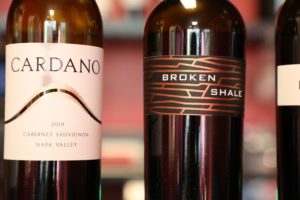
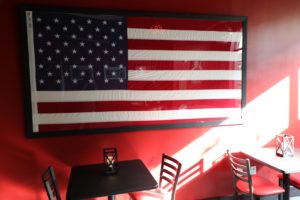
 Cardano Estate Wines. When your heritage is so deeply rooted in Napa Valley, including a part of its agricultural story, one must start with family. The founder of Cardano Estate Wines, Edward Snider’s grandfather Martin Garzoli on his mothers side of the family immigrated to the U.S. from Cardano Al Campo Italy (about a 10 minute drive from the Milan airport MXP) through Ellis Island in 1913 at age 11. He settled in Napa Valley; in the early 1930s he worked for the Christian Brothers, according to Ed for $2/week working three 12 hour shifts. For reference, the Christian Brothers moved to Napa Valley from Martinez in 1932. Visually Ed’s grandparents were physically mismatched; she was 5’2″ and he was a towering 6’9″. While working during the day farming in Napa and Sonoma, Martin would make home wine in the evenings. They were living in Carneros when in 1938 he tragically he died as a result of a hay bailer accident at age 44.
Cardano Estate Wines. When your heritage is so deeply rooted in Napa Valley, including a part of its agricultural story, one must start with family. The founder of Cardano Estate Wines, Edward Snider’s grandfather Martin Garzoli on his mothers side of the family immigrated to the U.S. from Cardano Al Campo Italy (about a 10 minute drive from the Milan airport MXP) through Ellis Island in 1913 at age 11. He settled in Napa Valley; in the early 1930s he worked for the Christian Brothers, according to Ed for $2/week working three 12 hour shifts. For reference, the Christian Brothers moved to Napa Valley from Martinez in 1932. Visually Ed’s grandparents were physically mismatched; she was 5’2″ and he was a towering 6’9″. While working during the day farming in Napa and Sonoma, Martin would make home wine in the evenings. They were living in Carneros when in 1938 he tragically he died as a result of a hay bailer accident at age 44.
His son John would later be signed by the San Francisco 49ers football team in 1955 and coach football in the city of Napa. Ed is a native of Napa Valley and used to coach football at St. Helena High School. St. Helena is in the heart of Napa Valley and many children of vintners attend this school. As expected, a number of Ed’s former students are now in the local and extended wine industry.
Ed remembers hearing stories from family including from his Italian grandmother who remembered driving a Ford Model A on dirt roads in Sonoma County and recalling how it was always a big deal for those in Napa Valley to visit those in Sonoma County and vice versa. Carneros used to be planted to prune orchards and kids would earn 25cents per each lug of picked prunes. And there were stories about winemaking including producing Zinfandel in a hay barn where bay bales were loaded into the barn to create a space in the center for wine barrels. A tarp was then used to cover the barrels and ice would be placed on top during fermentation.
Ed attended the University of Oregon but was more interested in whisky and beer than wine in those days. He distinctly remembers when he was 19 years old in 1979, his 1972 Ford Pinto broke down on Oakville Cross Road near where Justin and Bonny Meyer lived. He knocked on the Meyer residence requesting to use their phone to call for a tow truck; Justin asked him if he would like to work in the wine industry. It was a valid question; numerous relatives in both Sonoma County and Napa Valley were involved in some way in the wine business including the Biali’s (through marriage), Sebastani’s (August Sebastiani was his godfather), Martini’s (Louis Martini was his uncle) and the Bagicalupis (cousins). Ultimately he didn’t get into the wine business until in his 40s, as earlier he became involved in a number of non related wine business including eventually owning a number of Java Huts; he eventually sold this business to his cousin.
Cardano Al Campo Italy
In his 40s he and grower Alex Vyborny were interested in possibly purchasing vineyards in New Zealand. That never materialized. But then a friend suggested he look at a property off of Soda Canyon Road on Atlas Peak. He called up real estate agent Michael Crain and they looked at the 20 acre property. It was too big; but as he was driving home he spotted a nearby for sale by owner sign, knocked on the door and introduced himself.
The vineyard was planted at the time to only 1.5 acres of grapevines. Ed purchased the property (at an elevation of 1,650 feet) and developed the vineyard to 8 acres of Cabernet Sauvignon and a single acre planted to Cabernet Franc and Petit Verdot. He named the site, Stags Ridge.
He met a young winemaker Dave Phinney who had recently started The Prisoner Wine Company; Ed introduced Phinney to the site and offered to split the total production evenly (approximately 8 barrels of wine). Ed produced 4 barrels and when it was time to sell his small production he bottled it as Beau Vigne (pronounced bo-veenya), meaning ‘beautiful vineyard’ in French. He was soon introduced to Kimberly Jones, a California fine wine broker whose company Kimberly Jones Selections maintains an impressive Napa Valley portfolio. Beau Vigne’s first vintage (2002) and was sold at Tribeca Grill in New York City; Ed remembers his last 10 cases went to Wolfgang Puck at Spago in Beverly Hills for an Academy Award party with Robert DeNiro.
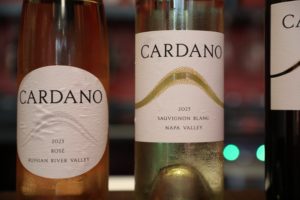 Phinney crafted the Beau Vigne wines followed by winemaker Kirk Venge. The brand was initially built for distribution but in a short period of time, Ed moved sales from distribution to direct to consumer and opened a tasting room in Yountville. And the wines earned praise and high scores from influential wine writers and critics. They received their first 100 point score by Robert Parker for the 2013 Beau Vigne Reserve Napa Valley Cabernet Sauvignon. And for eight years they produced a reserve Chardonnay from the Bagicalupi Vineyard – sourcing from vines planted in 1958, which also produced some of the grapes in Chateau Montelena’s award winning 1973 Chardonnay in the Paris Tasting of 1976. Those vines have since been pulled out; for reference the oldest commercially still producing Chardonnay vines in the U.S. are also in Sonoma County, at Hanzel Vineyards and date to 1953. Production of Beau Vigne went from 100 cases in 2002 to 4,400 cases by the time the brand was sold in 2019 to Appellation Trading Company.
Phinney crafted the Beau Vigne wines followed by winemaker Kirk Venge. The brand was initially built for distribution but in a short period of time, Ed moved sales from distribution to direct to consumer and opened a tasting room in Yountville. And the wines earned praise and high scores from influential wine writers and critics. They received their first 100 point score by Robert Parker for the 2013 Beau Vigne Reserve Napa Valley Cabernet Sauvignon. And for eight years they produced a reserve Chardonnay from the Bagicalupi Vineyard – sourcing from vines planted in 1958, which also produced some of the grapes in Chateau Montelena’s award winning 1973 Chardonnay in the Paris Tasting of 1976. Those vines have since been pulled out; for reference the oldest commercially still producing Chardonnay vines in the U.S. are also in Sonoma County, at Hanzel Vineyards and date to 1953. Production of Beau Vigne went from 100 cases in 2002 to 4,400 cases by the time the brand was sold in 2019 to Appellation Trading Company.
And Ed also sold Stags Ridge Vineyard to Don Dady, the founder of Seven Apart Winery. Don was already familiar with the Beau Vigne wines; he was introduced to Ed through Patrice Breton, the owner of Vice Versa wines. Ed assisted with the early winemaking for Seven Apart’s first vintage, before winemaker Andy Erickson was hired and took over production.
In 2020 Ed purchased a beautiful property at an elevation of approximately 1,900 feet on Howell Mountain. This is a premium vineyard neighborhood; nearby vineyards include Dunn, Impensata, Robert Foley and Paravel. Grapes from the vines were previously being sold to Del Dotto Winery. This site, now called Campo Vineyard is the backbone of the several Cardano Estate Cabernet Sauvignon wines. After purchasing the site, Ed planted another 2.5 acres; today the property is planted to nearly 5 acres of vines including the majority Cabernet Sauvignon but also Cabernet Franc and a late ripening section of Petit Verdot, organized into four distinctive blocks.
The property is extremely rocky as sites on Howell Mountain often are; when planting one of their blocks jack hammers had to be used to break up part of a volcanic rocky cap. Howell Mountain is also known for late frosts; in 2021 not yet having a wind machine on site, they lost approximately 400 vines to a late June cold snap.
Campo Vineyard, Howell Mountain
Select Wines
The 2023 Cardano Rosé Russian River Valley Pinot Noir (produced by saignée) is medium copper in color; the minerally bouquet is fresh, lively and bright with aromas of raspberry, wild strawberry, pomegranate and light red berries and rose petals. This is a delicate bottling, yet also offers some weight. The palate features a fleshy character, accompanied by more of the mineralities also shown on the bouquet. It offers flavors of ruby grapefruit, pomelo pith, wild strawberry and raspberry. Balanced, bright and refreshing, the finish begs another sip. The liveliness and vivacious attributes continue to linger for some time. And this wine shows particularly well after tasting opulent and bold Napa Valley Cabernet Sauvignon. Ed calls this his downtown wine – perhaps referring to its fun and playful character. Pair this with shellfish.
The 2023 Cardano Estate Sauvignon Blanc Napa Valley; the bouquet features both beautiful and elegant aromatics including white nectarine, orange blossom and honeysuckle. It is a little shy initially but give it time and it will open. For reference we tasted this merely a week after it was released. The palate is lively and bright with flavors of apple, pear, kiwi, gooseberry and pineapple guava. A refreshing wine, especially served bone chilled on a hot day. Mouth watering finish. It is bright and zesty without being green or grassy. Its texture is rounded, balanced ideally with its bright acidity. Pair with shellfish including raw oysters or spicy Thai seafood. The grapes for this wine were grown in Yountville.
The 2019 Cardano Cabernet Sauvignon Napa Winery 1913; the bouquet is clearly focused on the fruit and this makes sense when smelling the bouquet; it was entirely aged in neutral oak. This wine is deep ruby and nearly opaque; it has a flashy and opulent character to its aromatics with scents of violets, lavender and ripe dark berries including boysenberry jam and blackberry with dark chocolate. On the palate there are flavors of dark plum, blackberry, boysenberry and Persian mulberry. Juicy, yet also ripe this wine overdelivers on the pleasure level for the price point. The tannins are lightly grainy; but are nicely integrated into the finish and linger with a gravely character along with fruit. There is a light dried herb and darker component on the finish including of pepper and sage. The grapes were grown on Atlas Peak; this wine was only produced twice, in 2018 and 2019 and is clearly among the leaderboard for one of Napa Valley’s most affordable hillside bottlings.
The 2018 Cardano Cabernet Sauvignon Napa Valley Broken Shale is deep ruby and opaque in color; the bouquet is immediately sweetly and dark fruited with aromas of blackberry jam, dark cherry with a sweet liqueur attribute, boysenberry preserves along with dessert/baking spices including dark chocolate, cinnamon stick, mocha and espresso. Smells like dessert. Ripe on the palate like the bouquet, its expressions are of dark fruits including Pakistani mulberry, boysenberry, blackberry and dark cherry. It sports a pleasing tension we sometimes notice with riper wines between flavor, acidity and texture. The tannins are fully ripe, resolved and lightly gravelly but with a well-polished feel and linger with light to moderate grip, ultimately outpacing the fruit on the finish. A crowd favorite.
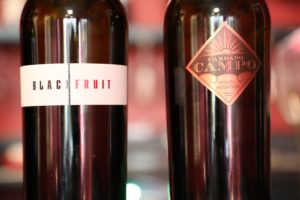 The 2022 Cardano Black Fruit Cabernet Sauvignon is deep ruby and opaque; in homage to its name, its aromatics are black fruit dominated including blackberry, boysenberry, dark cherry and dark plum with a blue fruit component including blueberries. Additional aromatics include mocha, espresso, coffee, old cedar box and dark chocolate. For the lack of a better word, this wine smells delicious. The texture sports a moderate to firm and dusty grip, showcasing both grape and oak tannins. Chewy. The extended finish lingers with a note of dried tobacco leaf and a pronounced note of toasted oak. This latter flavor is pleasant because it reminds us of both hard work and good times. It brings us back to our youth when we used to help cut up fallen oak trees, or down branches at our family friends property in the foothills of the Sierra Nevada. Sweaty, good old fashioned hard work, we were covered in oak dust at the end of the day. The tannins far outpace the fruit on the finish. Would love to pair this with a dry ruby steak from the BBQ. And incidentally Ed calls his 2022 wines, the best he has made since 2015; and it is clear from talking to him he is rightly proud of these bottles.
The 2022 Cardano Black Fruit Cabernet Sauvignon is deep ruby and opaque; in homage to its name, its aromatics are black fruit dominated including blackberry, boysenberry, dark cherry and dark plum with a blue fruit component including blueberries. Additional aromatics include mocha, espresso, coffee, old cedar box and dark chocolate. For the lack of a better word, this wine smells delicious. The texture sports a moderate to firm and dusty grip, showcasing both grape and oak tannins. Chewy. The extended finish lingers with a note of dried tobacco leaf and a pronounced note of toasted oak. This latter flavor is pleasant because it reminds us of both hard work and good times. It brings us back to our youth when we used to help cut up fallen oak trees, or down branches at our family friends property in the foothills of the Sierra Nevada. Sweaty, good old fashioned hard work, we were covered in oak dust at the end of the day. The tannins far outpace the fruit on the finish. Would love to pair this with a dry ruby steak from the BBQ. And incidentally Ed calls his 2022 wines, the best he has made since 2015; and it is clear from talking to him he is rightly proud of these bottles.
The 2022 Cardano Campo Howell Mountain Cabernet Sauvignon (was co-fermented with a small amount of Petit Verdot) is deep ruby and opaque with an amaranthine rim; the bouquet is showing extremely well for such a youthful wine. The aromatics are harmonious and are both simultaneously ripe yet also elegant, a rare combination. It includes scents of blackberry, boysenberry, mulberry and dark cherry with accompanying secondary dessert/baking spices including cocoa powder, mocha, cinnamon, vanilla, bakers chocolate and Graham cracker. This is a fun wine to keep smelling. On the palate, there are flavors of dark plum, cherry, blackberry and dark chocolate. This wine simply offers more; it is robust bottling in terms of both intensity of flavor and structure. The grainy, gravelly and chewy tannins anchor the extended finish and parallel the fruit for quite some time before eventually pulling ahead. The finish lingers with both fruit and grape tannins; chewy – broadly coating. Dusty/earthy finish with a note of dried tobacco spice. For those looking for both showiness, structure, depth and intense flavor, this bottling needs to be in your collection. And its showing exceptionally well right out of the gate. Texas lovers steak wine.
The 2022 vintage in Napa Valley featured a prolonged extreme heat wave around Labor Day with temperatures above 115 at times. For such a challenging year, their grapes we in remarkably good condition at the time of harvest. The fruit came in remarkably well for such a tough vintage. This wine was aged in the best (and most expensive) barrels that Taransaud produces, the coveted T5’s with one neutral French oak barrel also used.
—
Ed pioneered what he calls, ‘poor man decanting’ a necessity when making sales visits to restaurants and other retail outlets. He would pop the bottle, drain the wine just below the throat, give it some air and some ‘breathability’ time prior to meeting with potential buyers. He always found his wines showed better when doing this.
Ed’s son Cody is the General Manger for Cardano Estate and also oversees Campo Vineyard. And he owns Angel Shares, a tour and tasting company providing transportation using a fleet of 100% electric Hummer SUV automobiles. One of their experiences is a private tour of the Campo Estate Vineyard followed by lunch prepared by a chef. Their is no charge for the transportation service but minimum bottle purchases from the wineries are required of clients (usually 2-3 bottles per person).
Total annual production remains small with recent vintages running between approximately 350 to 500 cases. For more information or to purchase wine, please visit: www.cardanoestatewines.com
ARCHIVED NOTES
Tasting room, Napa
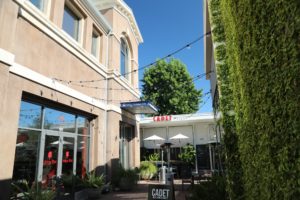 Cardano Estate opened a tasting space in downtown Napa on July 26, 2024 next to Cadet Wine Bar and Moulin Bakery. As of 2025 this tasting room space has since permanently closed and transitioned into the Marquee Pinball Lounge; while it was located downtown, it was a bit hidden because of its ‘alleyway’ location. The space previously housed previous Zeppelin Comics. Referred to the “red room’ this tasting room was decorated nicely with fun and almost speakeasy vibe including a disco ball is mounted on the ceiling and a roulette table. A prominently displayed flag was flown in Afghanistan the day Osama Bin Laden was killed.
Cardano Estate opened a tasting space in downtown Napa on July 26, 2024 next to Cadet Wine Bar and Moulin Bakery. As of 2025 this tasting room space has since permanently closed and transitioned into the Marquee Pinball Lounge; while it was located downtown, it was a bit hidden because of its ‘alleyway’ location. The space previously housed previous Zeppelin Comics. Referred to the “red room’ this tasting room was decorated nicely with fun and almost speakeasy vibe including a disco ball is mounted on the ceiling and a roulette table. A prominently displayed flag was flown in Afghanistan the day Osama Bin Laden was killed.
The tasting room was open from Thursday through Saturday with appointments taken for other days of the week. And a small Cardano Room was used to host private tastings. And through a partnership with a baker in the San Francisco Bay Area, Cardano Estate offered macaroon pairings with individual macarons chosen for each of the wines. Our recommendation: the delicious coffee macaron.

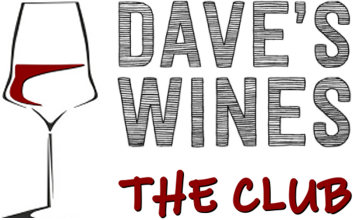




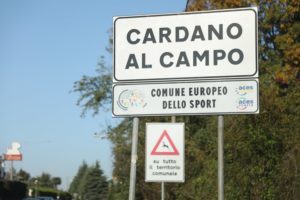
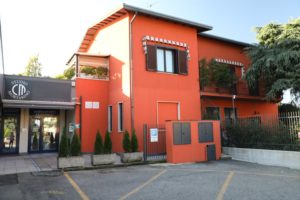
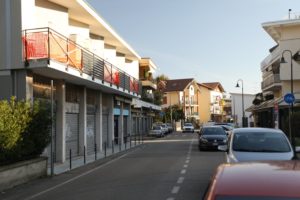
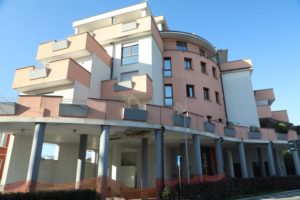

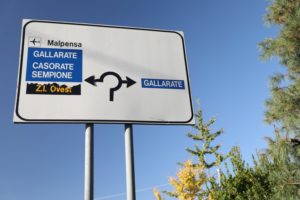

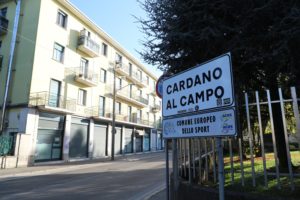

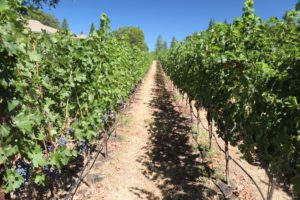
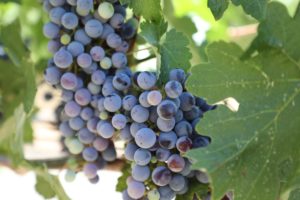
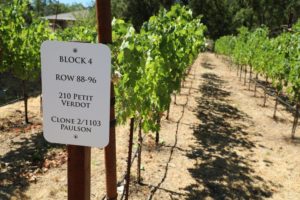
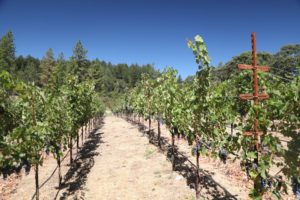
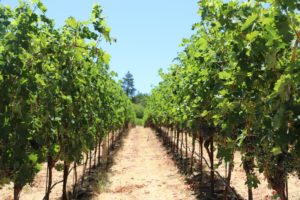
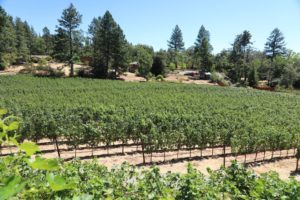
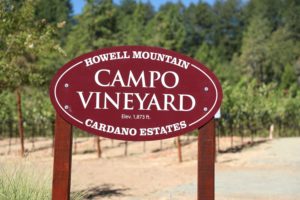
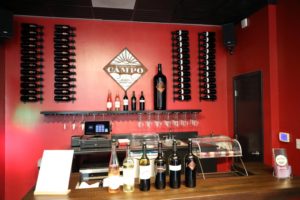
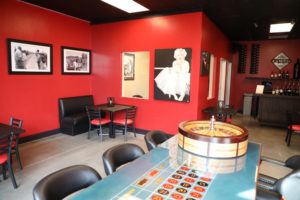
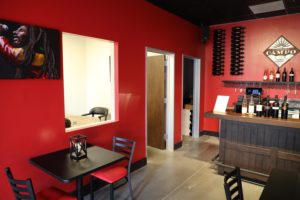
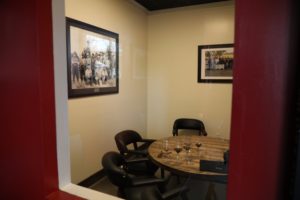
Dave you truly are amazing understanding of wine , your recall
Is so good and knowledgeable on all aspects of the valley, I enjoy your work , keep it up one of the best I ever sat with
Cheers ed
Thank you Ed. It was a pleasure to meet you and Cody. I look forward to seeing the Vineyard. ~ Dave
Great article!
Ed and Cody,
Looking forward to the new vintages! Hope to visit this October.
We have been big fans since the early 2000’s.
Wishing you two continued success.
Cheers!
Jon and Terry